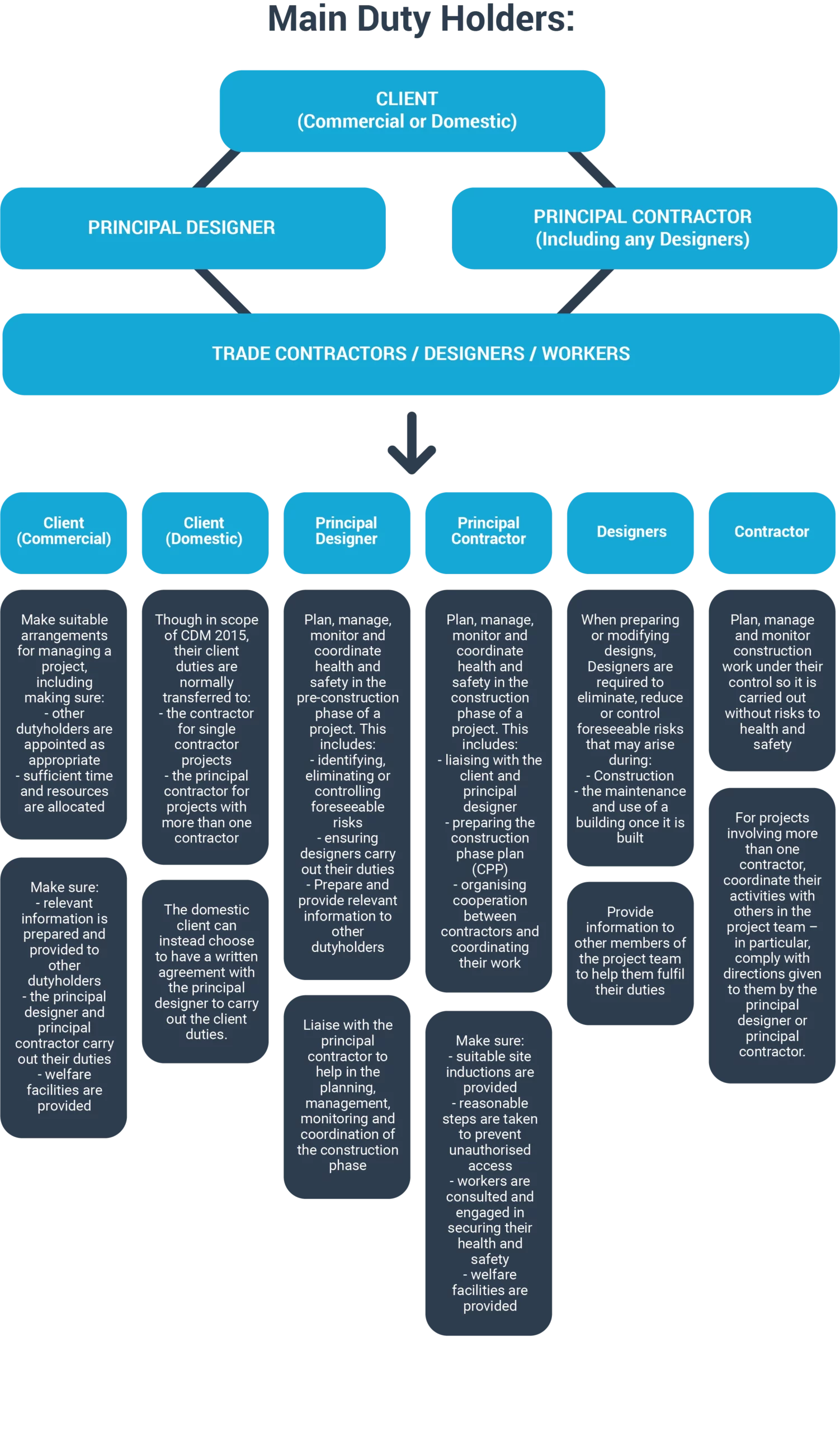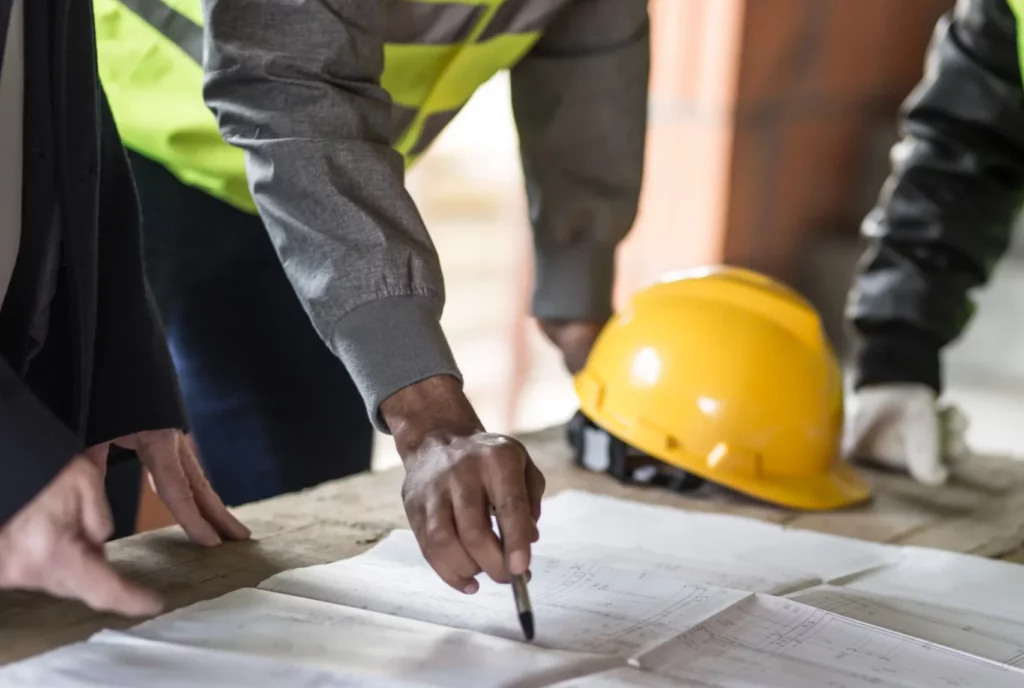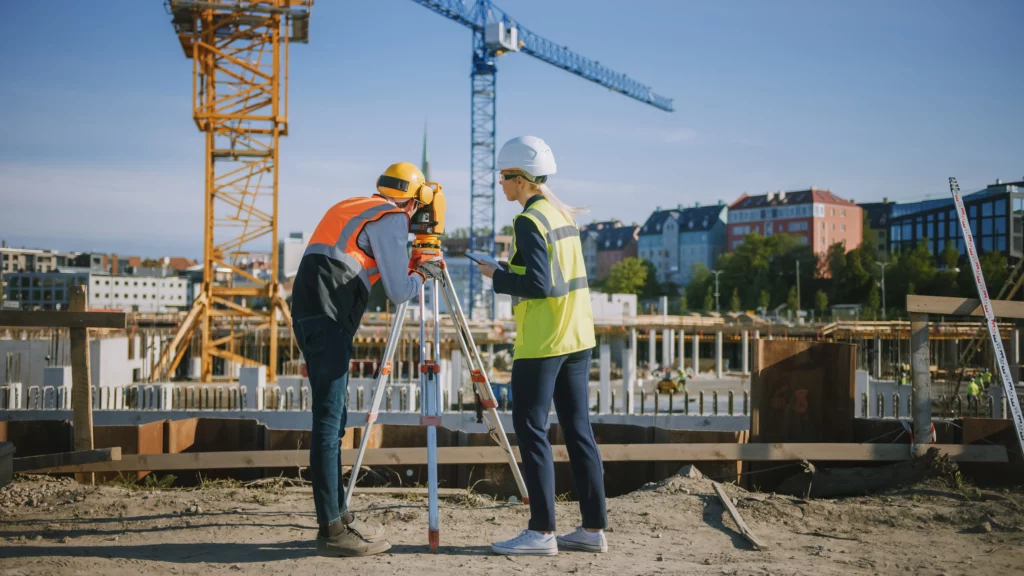Health and safety is a priority in the majority of sectors we work with, but in the construction industry, workplace safety can be a matter of life and death!
Our new 6-part series will explore safety, health, environmental and quality (SHEQ) specifically within construction.
Part 1
What is CDM 2015?
The Construction Design Management Regulations (CDM) originally came into force in the UK in 1994. They were based on a European ‘Construction Sites Directive’ – key aspects of which were implemented within the Construction Industry.
Construction had long been identified as one of the most dangerous industries. The introduction of CDM 1994 led to major changes in the industry, in an attempt to reduce fatalities and minimise injuries. By placing duties on Clients and Designers, risk reduction could be achieved through better planning, coordination, cooperation as well as competent project management.
In 2007, CDM regulations were revamped in order to make them more suitable for the industry. A new CDM Coordinator role was introduced to assist the Client by offering advice and generally managing the project risks. The 2007 regulations placed more emphasis on demonstrating competency at all levels of appointments made within the regulations and also aimed to make the process leaner by cutting out unnecessary paperwork, based on the level of risk involved.
Although this version of the regulations was deemed largely successful, in 2015 the latest revision of the regulations came into force. The following significant changes were introduced in 2015:
- The notification period was amended to 30 days with more than 20 persons working on-site at the same time
- A Construction Phase Plan (CPP) is now required for all projects
- There are extra duties on the Client to take adequate steps to ensure that the Principal Designer (PD) and Principal Contractor (PC) are complying with their duties
- CDM 2015 now applies to domestic projects
- The removal of the ACOP (L144) – replaced by guidance L153 Health & Safety in Construction

Construction Design Management – Documentation Requirements
Pre-Construction Information (PCI)
The Pre-Construction Information is a document which provides the information already in the Client’s possession, or which is reasonably obtainable, to relevant CDM Duty Holders such as Designer(s), Contractor or Principal Contractor. The Pre-Construction Information Pack is not explicitly referenced in CDM 2015, however, the Regulations state that Pre-Construction information should be in a convenient form and be clear, concise and easily understandable.
The Pre-Construction Information forms an essential part of complying with CDM. Designers must take into account all Pre-Construction information when preparing their designs. The Contractor or the Principal Contractor should then use the information to assist them to discharge their duties in relation to the compilation of a Construction Phase Plan (CPP).

Construction Phase Plan (CPP)
A Construction Phase Plan, also referred to as a CPP, is a document that sets out the health and safety management arrangements for a project and must include specific measures on how the significant risks associated with the project are intended to be managed; this is an explicit requirement under The Construction (Design and Management) Regulations 2015.
The CPP must be suitably developed prior to the commencement of construction and must be reviewed, updated and revised on a regular basis to remain relevant and reflect the rapidly changing nature of a construction site. For example, when work begins on a greenfield site to construct a building, the risks encountered are very different to those that exist later in the project once the main structure has been constructed.
Risk Assessment Method Statements (RAMS)
Method statements are widely used in the construction sector as a means of controlling more specific health and safety risks which usually will have been identified following a risk assessment. It would generally include things such as lifting operations, demolition, working at height and the use of plant. The aim of a method statement is to help manage the work and ensures that relevant risks and the necessary precautions have been communicated to relevant workers. RAMS are an important element of ensuring compliance with CDM 2015, by providing a safe system of works for all construction activities.
Toolbox Talks (TBT)
A toolbox talk is a simple yet effective approach for information sharing amongst all workers on a construction project. A toolbox talk is an informal meeting where safety topics associated with the particular work can be addressed, i.e., safe work practices and workplace risks. Toolbox talks are typically conducted on the work location. Effective toolbox talks comprise of an everyday safety discussion before a work shift and typically last 15-20 minutes.
The full series covering CDM Compliance
- Part 2: CDM Requirements for Principal Contractor Appointments
- Part 3: CDM Requirements for Trade Contractor Appointments
- Part 4: CPP documentation and compilation
- Part 5: RAMS
- Part 6: Construction requirements for toolbox talks and reports/registers
- Part 7: HS File Requirements (Bonus blog)
Sources for this blog:
Safety and Health Practitioner
Construction (Design and Management) Regulations – CITB
Construction – Construction Design and Management Regulations 2015 (hse.gov.uk)






































































